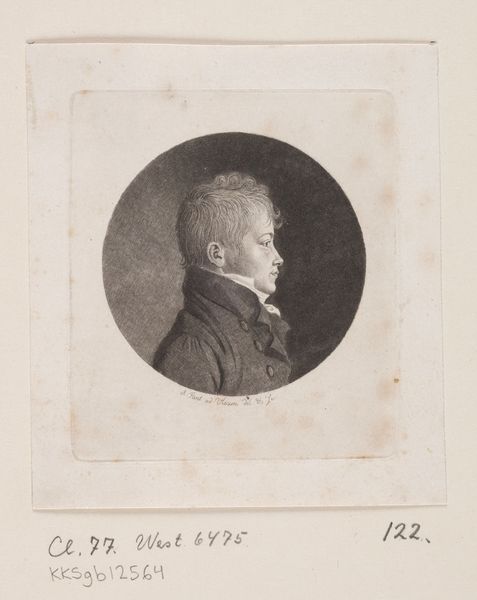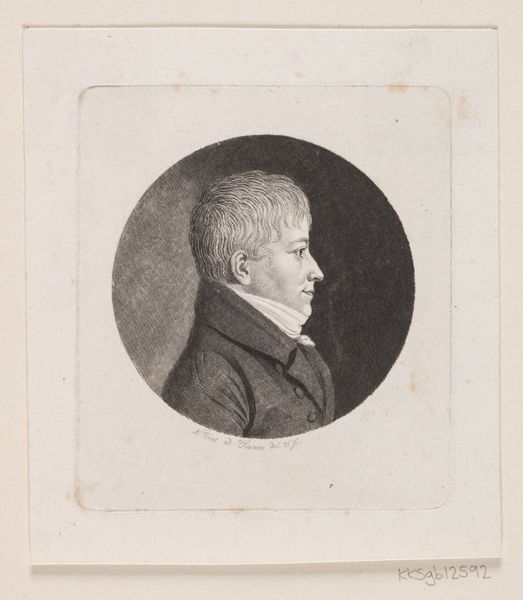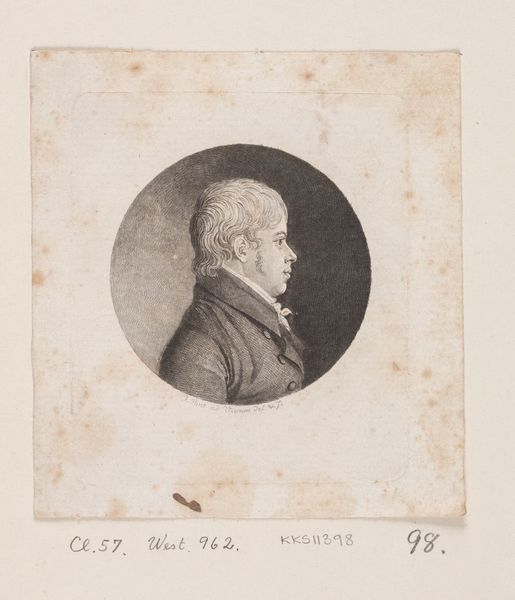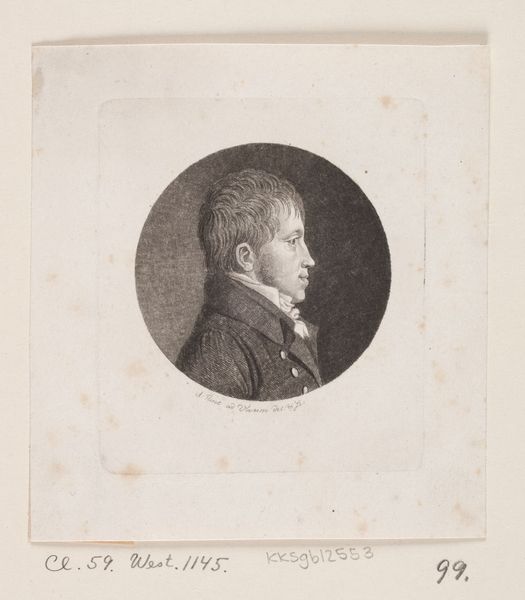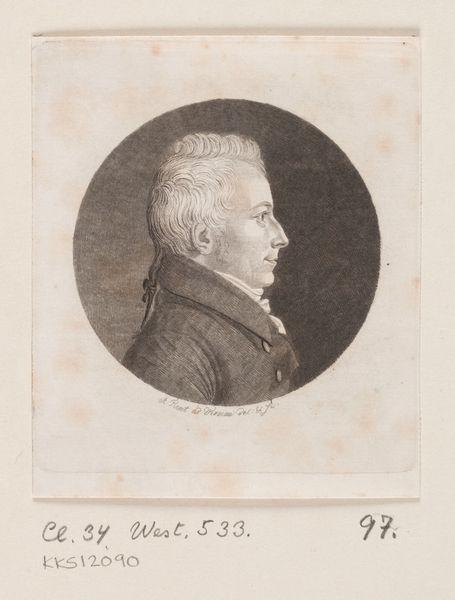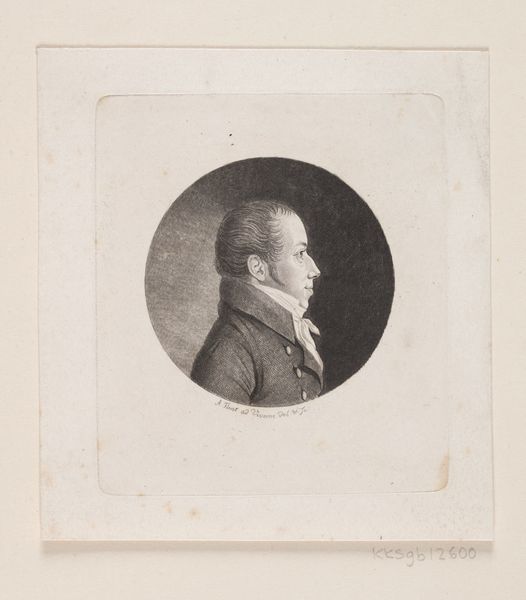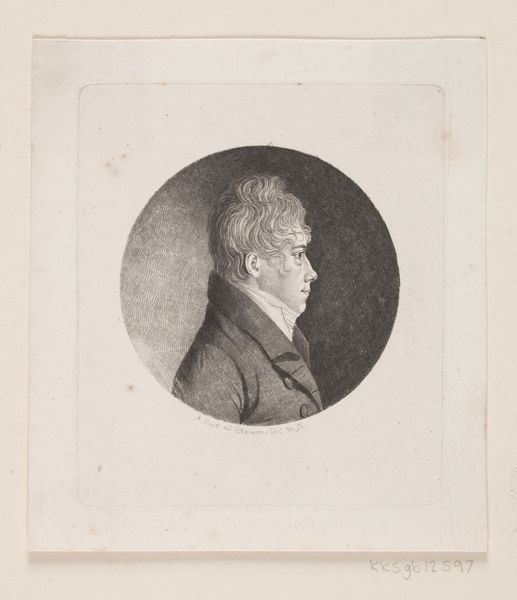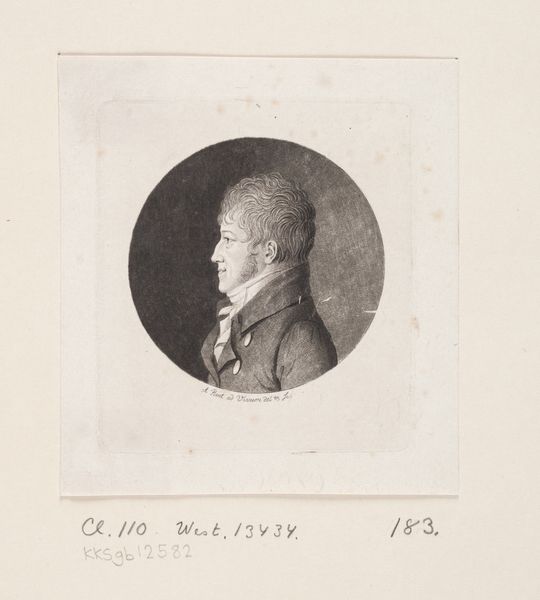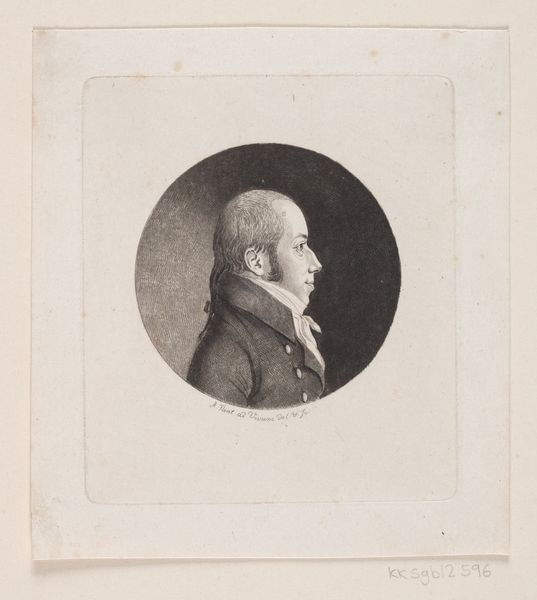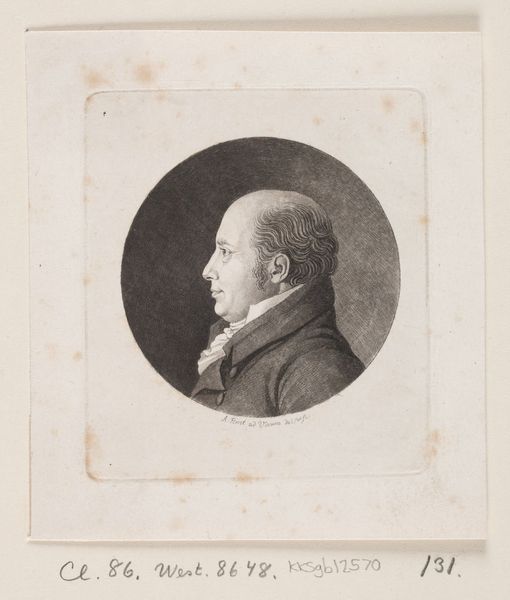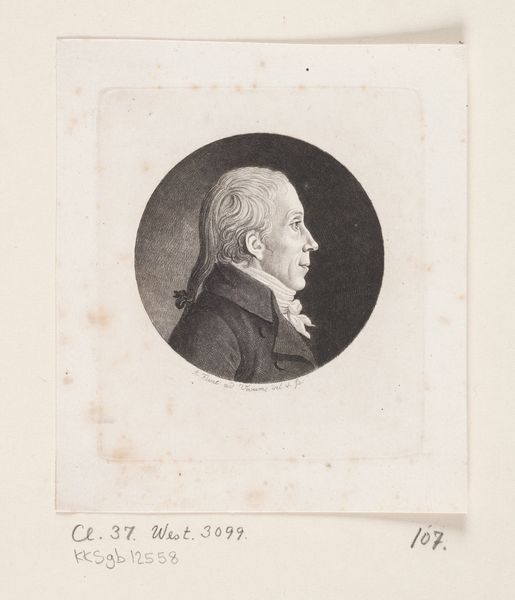
print, engraving
#
portrait
#
neoclacissism
# print
#
white clean appearance
#
form
#
line
#
history-painting
#
engraving
Dimensions: 62 mm (None) (billedmaal), 89 mm (height) x 81 mm (width) (plademaal)
Editor: Here we have a print, "C.A. Damkier," created sometime between 1767 and 1824. The artwork can be found at the SMK, that is, the National Gallery of Denmark. What strikes me is how crisp and clean the lines are, particularly for an engraving. How would you interpret this work, and how might we place it within its historical context? Curator: This portrait, though seemingly simple, reflects significant shifts in the public role of imagery. Its clean lines and classical aesthetic place it firmly within the Neoclassical movement. What's fascinating is how printmaking like this facilitated the distribution of images of prominent figures like C.A. Damkier. Consider the socio-political implications of this widespread dissemination. How does it change who has access to images and therefore, to power and influence? Editor: So, this engraving serves not just as a representation of an individual, but also as a tool in shaping public perception and social hierarchies? Curator: Precisely! Portraits during this period were rarely neutral. They were actively involved in constructing and reinforcing societal values and norms. Think about how institutions like the art academy and the market for prints contributed to this standardization of taste and the perpetuation of specific ideals of beauty and status. How might the format of printmaking itself, being easily reproducible, change the dynamics of portraiture compared to painted portraits only accessible to the wealthy? Editor: I guess prints made art, specifically portraiture, more available, shaping perceptions across a wider audience, rather than just within elite circles. Curator: Indeed. The ability to reproduce images en masse had profound consequences for the social and cultural landscape. Consider also how institutions then, like museums today, frame our understanding of such works through collecting, display and interpretation. Editor: That’s a powerful idea – the portrait not just as a likeness, but as a carefully constructed statement circulated within specific networks. It shifts my perception entirely. Thanks! Curator: My pleasure. It’s all about looking beyond the surface.
Comments
No comments
Be the first to comment and join the conversation on the ultimate creative platform.
